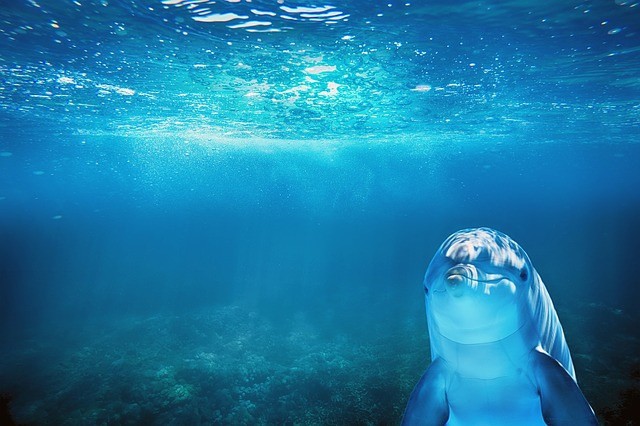
US Navy dolphins with strapped cameras show what transpires underwater when unseen by humans and left alone on their own to roam. The first footage of these marine mammals as they hunt on the North American coast was recorded from their perspective.
Dolphins Free To Hunt in San Diego Bay
They are naval specialists adapted to the marine environment, these dolphins are trained to detect sea mines and protect the US nuclear stockpile, but for the time being, they are free to roam San Diego Bay.
While unsupervised in the water, they show interesting footage of chases and even going after venomous sea snakes. There is little known about these cetaceans, such as how social they are or how they hunt for food. Other than being cute and drawing at ocean parks, less is known, reported Science Alert.
Researchers know a few ways how they catch prey; one is slurping their food and ramming chow down their throats. Scenes caught on camera surprised the researchers.
Six bottlenose dolphins had cameras strapped to them, done by the US National Marine Mammal Foundation (NMMF), that collected about six months of video and audio. It gave more clues about how the hunters worked and audio of how they would communicate in the sea.
Their mouths and eyes were seen in disturbingly off-angle positions when the video equipment was situated on their sides or back, unseen by humans until now.
NMMF marine mammal veterinarian Sam Ridgway and colleagues explain that it may be that these animals behave similarly to their wild cousins. While hunting, clicking sounds could be heard every 20 to 50 milliseconds from US Navy dolphins.
Click intervals shorten as prey approaches, turning into a terminal buzz and a squeal. There was constant buzzing and squealing that lasted until the fish was swallowed.
More than 200 fish, including bass, croakers, halibut, smelt, and pipefish, were caught by the dolphins with cameras strapped to them.
How Dolphins Catch Their Prey
The smelt frequently throws themselves into the air to flee the cunning predators. These cetaceans would pursue their prey while swimming upside down to allow their rotating eyes a clear view, a tactic previously seen in wild dolphins.
Ridgeway and other authors have drawn attention to the use of sight and sound in hunting and spotting prey while on the hunt.
The first step in finding fish is echolocating from a distance while waiting for a pingback. Once the fish is located, sight and sonar are combined to capture the intended target at close range.
Cameras also caught the sound of the animals' racing hearts as they attempted to keep up with the demanding activities. This clip shows that rather than ramming their prey.
Dolphins use suction to wolf down their still-fighting prey with their particularly powerful throat muscles. Mouths wide open, their throat muscles tense, and their tongues moved out of the way, they fed by sucking in fish from the sides. Their muscles for sucking play a part in the negative pressure their expanded inner mouth space helps to create.
Eight deadly yellow-bellied sea snakes were consumed by one dolphin, a Hydrophis platurus, but did not get sick.
Footage of the US Navy dolphins unseen by humans until now gives insight into their behavior based on the study conducted by researchers to understand them, citing PLOS ONE.
© 2026 HNGN, All rights reserved. Do not reproduce without permission.








